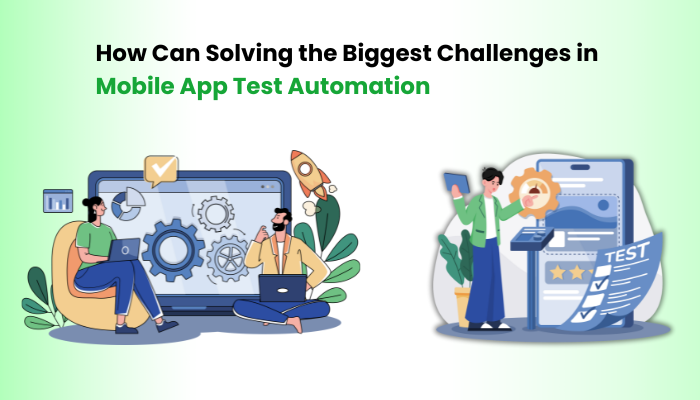Building flawless mobile applications is no small feat. Developers and testers alike are under constant pressure to meet rapid release cycles while ensuring quality. As apps become more complex and user expectations climb, ensuring error-free performance across devices becomes even more critical. That’s why mobile app test automation has emerged as a must-have strategy for development and QA teams.
But let’s face it—mobile app test automation is far from plug-and-play. Teams often face a labyrinth of challenges, from device fragmentation to unstable testing environments. The good news? These challenges can be overcome with the right tools, strategies, and mindset.
In this post, we’ll explore 10 major challenges in mobile app test automation and offer actionable solutions that QA teams can implement right away to improve efficiency, reliability, and test coverage.
Understanding Device Fragmentation in Mobile App Test Automation
One of the most frustrating aspects of mobile testing is the vast array of devices, operating systems, and screen sizes. A test that passes on one Android version might fail on another, and iOS comes with its own nuances.
To overcome this:
-
Use cloud-based device farms to test across real devices.
-
Prioritize devices based on your user analytics data.
-
Utilize responsive design testing tools to cover screen resolution issues.
When properly addressed, device fragmentation becomes less of a hurdle and more of an opportunity to increase test coverage effectively.
Managing Frequent OS Updates Without Breaking Tests
Operating system updates—especially on Android and iOS—can quickly break test scripts and automation flows. These updates often lead to deprecated APIs and UI changes, disrupting automation suites.
Smart ways to handle this include:
-
Keeping automation scripts modular and easy to update.
-
Automating update notifications for your testing environments.
-
Creating a rollback plan for emergency test suite failures post-update.
By anticipating OS changes, mobile app test automation becomes more resilient and future-proof.
Dealing with Test Script Flakiness and Instability
Nothing undermines confidence in automation like flaky test results. Intermittent failures can drain productivity and mislead QA teams about actual app performance.
Key strategies to eliminate flaky tests:
-
Implement retries with exponential backoff logic.
-
Use explicit waits instead of hard-coded sleep functions.
-
Continuously analyze and isolate unstable test patterns.
Creating reliable scripts ensures that mobile app test automation reflects real-world app behavior, increasing trust and usefulness in the process.
Handling UI Variability Across Devices and Versions
Mobile UI changes often without warning, and tests that depend on static elements like IDs or positions often break. This inconsistency causes increased maintenance time and reduced test reliability.
Tips to stabilize UI automation:
-
Use accessibility IDs instead of XPath or position selectors.
-
Opt for image-based testing where traditional selectors fail.
-
Utilize visual validation tools for layout consistency.
Adapting to UI changes through dynamic strategies enhances the stability of your mobile app test automation setup.
Speeding Up Test Execution Without Compromising Quality
The pressure to ship fast often leads to shortcuts in testing, which increases the risk of bugs slipping through. Long-running test suites also slow down continuous integration pipelines.
Here’s how you can optimize test speed:
-
Parallelize test runs across multiple devices.
-
Use tagging and prioritization to run only critical tests during development.
-
Adopt risk-based testing to focus on high-impact areas first.
Balancing speed and depth is essential to keep mobile app test automation efficient yet robust.
Integrating Test Automation Seamlessly into CI/CD Pipelines
One of the biggest bottlenecks is the failure to integrate testing into the development cycle. When testing is an afterthought, it leads to missed bugs and slower feedback loops.
Best practices for CI/CD integration:
-
Use Jenkins, GitLab CI, or Circle CI to automate test triggers.
-
Set up automated reports and alerts post-build.
-
Use containerized test environments for consistency.
Making mobile app test automation part of the CI/CD process reduces manual effort and increases visibility across teams.
Ensuring Data Privacy and Security During Testing
Mobile apps often handle sensitive user information. Testing such applications can pose risks if data privacy is not handled properly.
Secure your testing environment by:
-
Using synthetic or anonymized data in test environments.
-
Encrypting all test logs and communication between systems.
-
Complying with data protection regulations (e.g., GDPR, HIPAA).
By prioritizing security, you ensure your mobile app test automation meets both performance and privacy standards.
Scaling Test Automation Across Agile Teams
As teams scale and projects expand, managing test automation across multiple teams becomes complex. Without coordination, redundancy and confusion can cripple test quality.
How to scale successfully:
-
Establish shared libraries and reusable test components.
-
Centralize test data and environments.
-
Assign ownership of test modules across squads.
A collaborative approach turns mobile app test automation into a scalable asset instead of a siloed task.
Choosing the Right Tools for Mobile App Test Automation
The wrong tool can do more harm than good. From Appium and Espresso to XCUITest and Detox, the choices are many—and each has its strengths.
To choose the right tools, consider:
-
Project requirements (native vs. hybrid vs. cross-platform)
-
Team expertise and learning curve
-
Integration capabilities with your CI/CD setup
Choosing the right stack helps ensure long-term maintainability and success with mobile app test automation.
Maintaining Test Suites as Applications Evolve
Apps aren’t static. With every sprint, new features, screens, and flows are introduced. If test suites aren’t updated in sync, they become obsolete.
Maintain your test suites by:
-
Performing regular audits of test coverage.
-
Version-controlling your test cases.
-
Automating test data generation to keep up with feature changes.
Constant evolution requires that your mobile app test automation evolves alongside the app to stay relevant and accurate.
Reference This Article- Why Mobile App Test Automation Is Essential for Bug-Free Releases
Final Thoughts
No mobile app is perfect, but testing rigorously and smartly brings you closer to that ideal. By solving these common challenges in mobile app test automation, development teams can move faster, catch bugs earlier, and release apps that perform flawlessly across devices.
Whether you’re building your first automation suite or refining an enterprise-level framework, tackling these hurdles head-on will unlock the full potential of your testing efforts.
Read This Website For More Information – insidetechie.blog
 :
https://uk.pinterest.com/testevolve/
:
https://uk.pinterest.com/testevolve/












